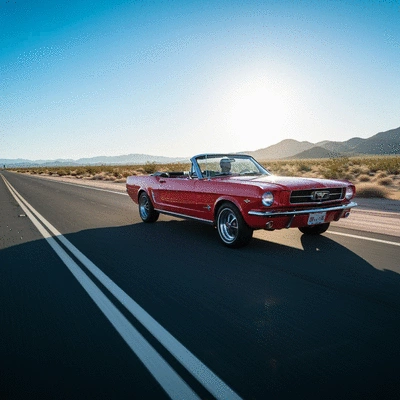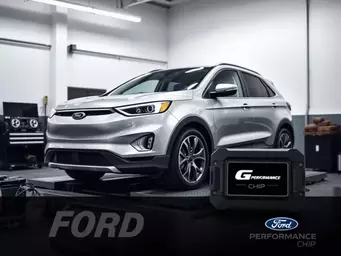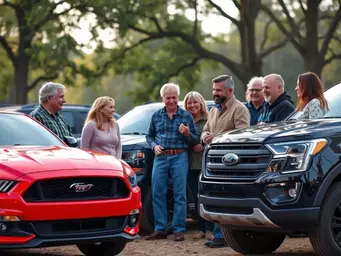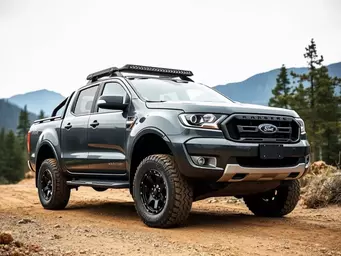
Restoring 1953-1956 Ford F-100s
Restoring a classic Ford F-100 is more than just a project; it's an adventure filled with challenges and rewards. As you embark on this journey, consider the insights that can elevate your restoration experience and connect you with a vibrant community of enthusiasts.
What You Will Learn
- The timeless appeal of the 1953-1956 Ford F-100 models, combining durability and classic aesthetics.
- Key differences between full restoration and resto-mod, helping you set clear goals for your project.
- The historical significance of the F-100, showcasing its engineering advancements and cultural impact.
- Essential criteria for evaluating the success of your restoration, ensuring quality and functionality.
- How to engage with the Ford enthusiast community for support, resources, and shared experiences.
- The benefits of documenting your restoration journey for personal reflection and educational value.
Ford F-100 Restoration Pathways & Historical Significance
This visual outlines the key choices in restoring a 1953-1956 Ford F-100 and highlights its historical importance.
Restoration Goals: Full vs. Resto-Mod
Full Restoration: Original Factory Condition
Resto-Mod: Modern Tech with Classic Aesthetic
F-100 Appeal & Significance
- ⭐Timeless Design
- 🤝Strong Community
- 🔧Versatile Build
- 💡Innovation
- 👑Cultural Icon
Evaluating Restoration Success
- ✨Finish Quality
- ⚙️Mechanical Function
- 📐Alignment & Fit
- 💺Comfort & Safety
Community Engagement & Next Steps
- 💬Online Forums
- 📱Social Media Groups
- 🚗Car Clubs & Shows
- ✍️Document Journey

Starting Your Ford F-100 Restoration Journey: Essential Considerations
Embarking on a restoration journey for a 1953-1956 Ford F-100 is like stepping back in time, where every curve and detail tells a story. These classic trucks resonate with automotive enthusiasts, and as someone who shares a deep-rooted passion for Ford vehicles, I can assure you that this journey is as rewarding as it is challenging. Let’s dive into what makes these models so appealing and how to kickstart your project with confidence!
At Ford Power, we understand the thrill of driving a piece of history. The Ford F-100 has an undeniable charm, blending robust design with a legacy of reliability. What draws many to these trucks is their unique character—each restoration is a canvas for creativity, allowing you to create something truly personal!
Understanding the Appeal of 1953-1956 Ford F-100 Models
The allure of the 1953-1956 Ford F-100 models lies in their mix of classic aesthetics and practical functionality. These trucks were built with a focus on durability and style, making them perfect for restoration enthusiasts. Here are a few key reasons why they remain popular:
- Timeless Design: The iconic lines and vintage styling capture attention wherever you go.
- Strong Community: There’s a vibrant community of fellow Ford enthusiasts who share tips, tricks, and experiences.
- Versatile Build: Whether you want a full restoration or a modern upgrade, these models can accommodate various styles.
These factors contribute to a rich restoration experience, allowing you to connect with a piece of automotive history while enjoying the hands-on work that brings these beauties back to life.
Setting Realistic Goals: Full Restoration vs. Resto-Mod
When considering your restoration goals for the F-100, it’s essential to decide between a full restoration and a resto-mod. Each path offers unique benefits, and understanding them will help shape your project: For detailed guidance on F-100 restoration, including practical tips and considerations, you can refer to the comprehensive 1953-1956 Ford F-100 Restoration Guide available from Hemmings.
- Full Restoration: Aiming to return the truck to its original factory condition requires meticulous planning and attention to detail. The Classic Car Club of America also offers valuable restoration tips for these models.
- Resto-Mod: This approach allows you to incorporate modern technology and performance upgrades while retaining the classic aesthetic.
Think about what you want from your truck. Is it the nostalgia of a perfectly preserved classic, or the thrill of blending vintage looks with modern performance? Establishing this goal early on will guide your decisions throughout the restoration process.
Exploring the Historical Significance of the Ford F-100
The Ford F-100 isn’t just an old truck; it’s a symbol of American ingenuity and craftsmanship. Originally launched in the early 1950s, these trucks were designed to be workhorses, and they quickly found their place in both industrial and personal use. Here’s what to keep in mind about their historical significance:
- Innovation: The F-100 introduced several engineering advancements, making it a favorite among tradespeople. For a deeper dive into the engineering behind classic vehicles, you might find technical papers on automotive design from SAE International insightful.
- Cultural Icon: It has been featured in countless films and shows, showcasing its status in American culture.
- Collector’s Item: As time goes on, these trucks have become increasingly sought after, with many enthusiasts passionate about preserving their legacy.
By restoring a Ford F-100, you’re not just reviving a vehicle; you’re honoring a significant chapter in automotive history that continues to inspire generations of car lovers.
Interactive Poll: Your Restoration Journey
Have you ever restored a classic vehicle, or are you planning to? We want to hear about your experience! Share your thoughts below:
Frequently Asked Questions About Ford F-100 Restoration
What makes the 1953-1956 Ford F-100 models so appealing?
These models are highly appealing due to their timeless design, robust durability, and classic aesthetics. They also benefit from a strong community of enthusiasts and offer versatile build options for various restoration styles.
What is the difference between a full restoration and a resto-mod?
A full restoration aims to return the truck to its original factory condition, focusing on historical accuracy. A resto-mod, however, incorporates modern technology and performance upgrades while maintaining the classic aesthetic, blending old and new.
Why is the Ford F-100 considered historically significant?
The Ford F-100 is a symbol of American ingenuity, known for its engineering advancements and role as a reliable workhorse in the 1950s. It has become a cultural icon, featured in various media, and is highly sought after by collectors.
How can I evaluate the success of my F-100 restoration?
To evaluate success, focus on finish quality (smooth paint, no imperfections), mechanical function (smooth engine operation, no strange noises), alignment and fit (panels align, doors open/close smoothly), and comfort and safety (comfortable interior, functional safety features).
How can I connect with the Ford enthusiast community?
You can engage with the community through online forums (like Ford Truck Enthusiasts), social media groups dedicated to F-100 restorations, and by joining vintage car clubs or attending classic car shows. Documenting and sharing your journey can also foster connections.

Wrapping Up Your Ford F-100 Restoration: Next Steps
As you come to the end of your Ford F-100 restoration journey, it's essential to take a moment to evaluate the work you've put in. Did you achieve what you set out to accomplish? Each restoration is a unique story, and understanding the success of your project is key to appreciating your hard work. Let's explore what to look for when assessing your restoration.
Evaluating Your Restoration Success: What to Look For
It's time to give your F-100 a thorough inspection! Here are some key areas to focus on when evaluating your restoration:
- Finish Quality: Look for a smooth paint job with no imperfections.
- Mechanical Function: Start your engine and ensure it runs smoothly without any strange noises.
- Alignment and Fit: Check that all panels align correctly and doors open and close smoothly.
- Comfort and Safety: Ensure that the interior feels comfortable and all safety features function properly.
Taking the time to check these elements will help you celebrate your achievements and identify any last-minute adjustments that might be needed. Remember, even the smallest details contribute to the overall success of your restoration!
Engaging with the Community: Forums and Resources
Once your restoration is complete, it's time to share your success with the vibrant community of Ford enthusiasts! Engaging with others who share your passion can lead to invaluable insights and friendships. Here are a few resources I recommend:
- Online Forums: Websites like Ford Truck Enthusiasts provide a platform to ask questions and share experiences.
- Social Media Groups: Join Facebook groups dedicated to Ford F-100 restorations for real-time discussions.
- Blogs and Websites: Following sites like Ford Power can keep you updated on the latest restoration tips and trends.
Don't hesitate to dive into discussions and showcase your hard work! Sharing your experiences can inspire others and help you learn more about your beloved Ford F-100.
Connecting with Vintage Car Clubs and Classic Car Shows
Another fantastic way to celebrate your completed project is by connecting with vintage car clubs and attending classic car shows. These events are not just about showcasing your restoration; they’re about building relationships and sharing your stories. Here’s why you should consider getting involved:
- Networking Opportunities: Meet fellow restorers and enthusiasts who can help you continue your journey.
- Learning Experiences: Gain insights from others’ restorations and share techniques.
- Showcase Your Work: Display your F-100 and receive feedback from those who appreciate classic cars.
Attending these events can reignite your passion and reinforce the community ties that make restoration projects so rewarding!
Encouragement for Every Restorer: Embrace Your Passion
Before you get back to enjoying your fully restored Ford F-100, it’s essential to remember that every restoration journey is unique. Each challenge you've faced along the way is a testament to your dedication and love for these classic vehicles. Let’s look at why sharing your journey can be incredibly rewarding.
Sharing Your Journey: Benefits of Documenting the Process
Documenting your restoration process not only chronicles your hard work but also provides benefits that can enhance your experience:
- Personal Reflection: Reviewing your journey helps you appreciate the effort you put in.
- Educational Value: Your documented steps can assist others who are looking to start their own restorations.
- Creating a Legacy: A well-documented project can become part of your family’s history.
Consider starting a blog, a photo album, or even a video series to share your journey with others. You might be surprised by how many people resonate with your experiences!
Future Opportunities: Networking with Other Restorers
As you connect with others in the restoration community, countless opportunities open up. Networking can lead to:
- Collaborations: Work with fellow enthusiasts on group projects.
- Events and Meetups: Attend gatherings where you can show off your truck and meet new friends.
- Access to Resources: Gain insight on sourcing parts, troubleshooting, and more.
Embrace these opportunities wholeheartedly! The relationships and knowledge you gain can enrich your experience in ways you may not have anticipated. So, share your passion, and connect with others—you’re part of a larger community that celebrates the beauty of Ford vehicles!
Recap of Key Points
Here is a quick recap of the important points discussed in the article:
- Understanding the Appeal: The 1953-1956 Ford F-100 models offer timeless design, a strong community of enthusiasts, and versatility in restoration options.
- Setting Goals: Decide between a full restoration for originality or a resto-mod for modern upgrades to align with your vision.
- Historical Significance: Recognize the F-100 as a cultural icon that reflects American ingenuity and craftsmanship.
- Evaluating Success: Inspect finish quality, mechanical function, alignment, and comfort to assess your restoration's success.
- Engaging with the Community: Utilize online forums, social media groups, and vintage car clubs to connect with fellow enthusiasts and share your journey.
- Documenting Your Journey: Sharing your restoration process can inspire others and create a legacy for future generations.





Ford Performance Chips: Real Results
2026 Ford Escape: A Comparison
Connecting Through Ford Owner Clubs
Essential Mods for Ford Rangers
Finding Rare Ford Classic Parts